Emerald, for millennia, has set the standard for all green colored gemstones. The word emerald is derived from “smaragdus”, ancient Greek for green, making the words green and emerald literally synonymous. Emerald’s color is associated with the lushest landscapes and the richest greens. It symbolizes springtime, with its renewal, rebirth and regeneration of life. When one thinks of emeralds, the lush green of Ireland immediately comes to mind. Seattle, in the US state of Washington, is the Emerald City. Thailand’s most sacred religious icon is named the Emerald Buddha, even though it’s carved from green jadeite. Tranquil, mysterious, and mesmerizing, emerald evokes calm and confidence.
Long revered for its deep green color, emerald remains one of the most precious gemstones available. Its association with spring makes it the perfect choice of a birthstone for the month of May. Emerald is also the chosen gift for the 20th or 35th wedding anniversary.
100 East Fine Jewelry currently does not offer any pieces containing emerald. However, we do have a ring with a similarly colored tourmaline gemstone, seen below. Click the link to browse the entire 100 East Fine Jewelry Collection.
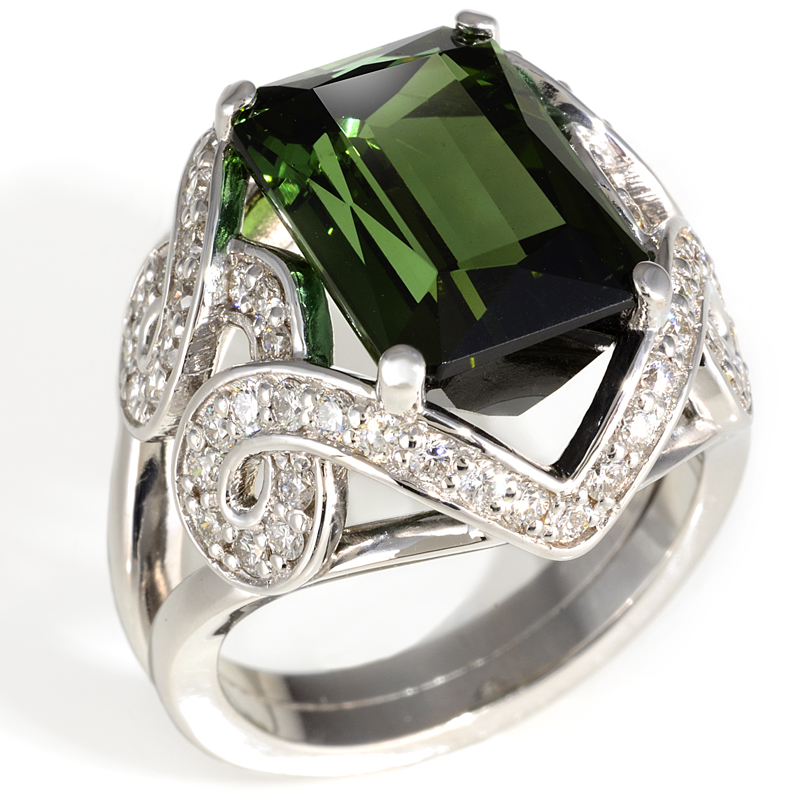
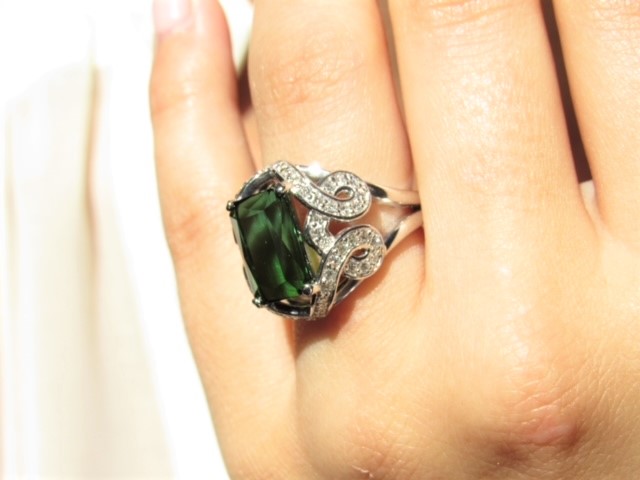
History
Almost every civilization has treasured the beauty of the emerald. The first known emerald mining occurred in an area of Egypt known in Greek as “Mons Smardagus” (Emerald Mountains) where its mines are thought to have been worked as early as 3000 BC. These mines continued to be worked intermittently until around 30 BC, when mining began in earnest under the Romans. Egypt remained the major source of emeralds for centuries.
The earliest use of emeralds in jewelry and objects of personal adornment date back to the Graeco-Roman period (50 BC to 395 AD). These jewelry items are presumed to have had both an artistic and religious importance. These early jewelry pieces contained emerald crystals in their natural form or lightly polished with holes drilled so they could hang as a necklace or earrings. The emeralds used in these early jewelry pieces were most likely from Egyptian mines, but could have been from India, Austria or Central Asia, where small amounts of emerald crystals were mined.
From Egyptian pharaohs to Inca emperors, emerald has enchanted royalty. Cleopatra (69 BC to 30 BC) was known to have a passion for emeralds. She was an avid collector, using them in her royal adornments. Cleopatra wanted to guarantee herself high quality gems by taking control of Egypt’s emerald mines away from the Greeks!
Roman author Pliny the Elder (23 AD to 79 AD) wrote in his encyclopedic Natural History that “nothing greens greener”. He also stated emerald had therapeutic properties that helped gem cutters: “(they) have no better method of restoring their eyes than by looking at the emerald, its soft, green color comforting and removing their weariness and lassitude.” Science now confirms the color green relieves stress and eye strain.
Spanish explorers changed the course of emerald mining with their arrival in the new world in the 1520’s. Large supplies of better quality emeralds were discovered in present-day Colombia. Aztecs and Incas used large emeralds in religious rituals. The Spanish valued precious metals more than emeralds, so they traded the South American emeralds across Europe and Asia in return for gold and silver. This opened the emerald trade up to the rest of the world. Colombia quickly became recognized as the world’s premier emerald source, dominating the market ever since.
The legendary “Crown of the Andes”, adorned with almost 450 emeralds, is one of the finest surviving examples of Colonial Spanish American goldsmith work. It was made in two sections, spanning more than a century. The first part, the diadem, a type of ornamental headband which serves as a crown was created in the 1660’s. Four imperial arches were added in the 1770’s. The crown was made to be worn by a larger-than-life-sized sculpture of the Virgin of the Immaculate Conception in the cathedral of Popayán, a city in what is now southwestern Colombia. On important holidays, the statue would be decorated with precious garments and jewels, including the crown, and carried in procession through the streets of the city. Remarkable for its exquisite craftsmanship, the crown is also known for the size and quality of its untreated emeralds. The largest, at twenty-four carats, is known as the "Atahualpa emerald”. According to lore, the Atahualpa emerald was taken from the last Inca emperor, Atahualpa, by conquistador Francisco Pizarro.
Lore
Emerald’s lush green has soothed souls and excited the imagination since antiquity. Aristotle believed emeralds bestowed the gift of eloquence and protected its wearer against bodily harm. Emerald was believed to bring health and wealth to its owner, symbolizing rebirth and the abundance of the life force and hope of new possibilities. They were considered a symbol of eternal youth by ancient Egyptians, who desired being buried with emeralds.
Legend has it emerald has the power to make its wearer more intelligent and quick-witted, and it was once believed to cure diseases like cholera and malaria. Some believed it exposed lovers who made false promises. Upheld as a symbol of devotion, contentment and undying love, emerald traditionally has been thought to protect and renew relationships. Green was also the color for Venus, the Roman goddess of love and beauty.
Romans thought gazing into emeralds was useful to relieve stress and eye strain. It was also thought to have magical powers. By placing it under the tongue, one could see into the future, as well as reveal truth and be protected against evil spells.
Use in Jewelry Today
Emerald is one of the most beautiful gemstones in the world. With exemplary grace, it’s highly sought after and makes for a striking and enticing addition to fine jewelry pieces. Emerald represents prestige, luxury and wealth and is often seen on red carpets. No fine jewelry collection is considered complete without it. Most emerald jewelry is worn only on special occasions, lending to its elegance and sophistication.
Emerald use in jewelry had been on the decline for some time, but this has changed, making it a growing trend in the fashion and jewelry markets. Its popularity is increasing for use in modern fine jewelry designs. It works well in all types of jewelry and is appropriate for a range of styles. Balanced and elegant, emerald perfectly complements all colors in the spectrum.
Emerald is an integral part of the colored gemstone jewelry market; specifically the bridal market. There, emeralds can be found as both center stones and accent side stones for engagement rings. But, are emeralds a good choice for engagement rings? Emeralds are not very durable and can easily break or chip. You should take this into consideration before making a decision. However, with proper care and careful wear, emerald engagement rings can last a lifetime.
Color Characteristics and Treatments
Emerald is the most prized variety of beryl, a mineral species which includes aquamarine. Emerald’s full color range extends from slightly yellowish green to pure green to bluish green. To be considered emerald, the stone’s tone must fall between medium light and dark. Pure green is rarest, while emeralds with a yellow modifier are often less desirable. The most desirable emerald colors are bluish green to pure green, with vivid color saturation and tone that’s medium to dark, but not too dark. The more vivid the color, the more valuable the gemstone. GIA describes the ideal emerald color as vivid, slightly bluish green.
If it’s green jewelry you’re looking for, you may find emerald the most expensive option. Emerald is one of the most misunderstood – and difficult gemstones to place a value on. As with other colored gems, the primary factor in an emerald’s value is its color. One problem is experts differ on the degree of green required to separate an emerald from its less-expensive cousin, green beryl. Most gemologists, gem labs, and colored stone dealers call a stone green beryl when its color is “too light” to be classified as emerald. Even among those groups, a difference of opinion can occur about what “too light” means.
A second important factor in placing a value on emerald is its clarity. Due to formation conditions and commonly used mining techniques, emerald tends to contain fissures and fractures which can diminish its transparency. For Normal Color Range diamonds, clarity is a big driver of an individual stone’s price. While the most-prized emeralds are highly transparent, its fissions and fractures are tolerated more than in virtually any other gem. They may even be viewed as desirable. Its inclusions can form lovely patterns, referred to as “jardin”, after the French word for garden. The jardin may be so unique it actually increases the stone’s value.
The third factor affecting an emerald’s value is its source. Columbia emeralds are highly sought and sell for a premium.
Because of emerald’s often numerous inclusions and surface-reaching fissures, a vast majority of emeralds are treated with oil, plastic or resin. The exception is Zambian emeralds, which have a clearer structure and are less likely to be treated. Clear oils, most frequently cedar oil, is applied to the stone to fill surface cracks and enhance its clarity and beauty. The U.S. Federal Trade Commission requires the disclosure of oil treatment during an emerald’s sale. Top quality, unenhanced stones (with certification) can bring as much as 50% more in price than treated stones of the same size, color, and clarity. Occasionally, the oil, plastic or resin filling material may be dyed to improve the color of the stone. This must be disclosed as color treatment, which substantially reduces price.
Emerald does not respond well to heat treatment. Irradiation to improve color is possible but the results are not impressive. Use of polymer with dyes is also well-known. The use of polymer to fuse the pieces of beryl or low-grade emerald together in order to create bigger pieces has been reported. These stones are considered as “composite” and must also be disclosed.
Although emerald is a relatively hard gemstone, its internal jardin leaves it susceptible to damage. To learn about caring for your fine jewelry, please read our blog Caring For Fine Gemstone Jewelry. Emerald jewelry should never be placed in jewelry cleaning solutions, and never subjected to the force of steam or the vibration of an ultrasonic cleaner. The safest and most effective way to clean emerald jewelry is with a soft brush and gentle solution of dish detergent and warm water. For additional details, please read our blog Cleaning Fine Gemstone Jewelry.
Formation, Mining and Cutting
Emerald’s color is derived from the presence of chromium and sometimes iron and vanadium during crystal formation. Because of specific temperature, pressure and fluid requirements for formation, emerald is extremely rare and highly variable in its distribution. The unusual geological conditions also make emerald brittle compared to other gemstones.
The shape of emerald crystals as they emerge from the earth are often elongated or squat hexagonal shapes. The best emerald crystals are gorgeous flat-topped green hexagonal columns that are as beautiful as faceted stones. (Image via GIA)
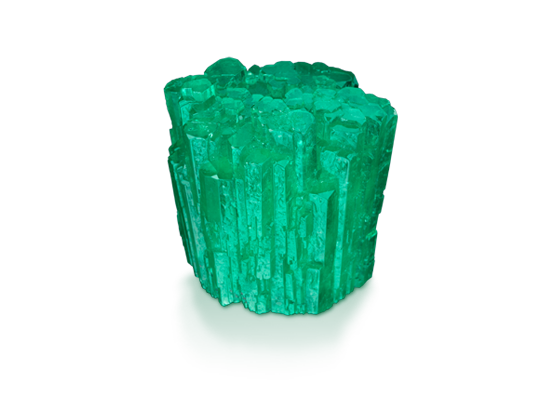
Today, most of the world's emeralds are mined in Colombia, Zambia and Brazil. Colombian emeralds are the standard by which all others are measured. The mountain ranges of the Colombian Andes are the source of many of the world’s most prized emeralds. Zambia is second after Colombia. Zambian emerald is desired for its tendency to be slightly higher in clarity but the material can also be overly dark, particularly in larger sizes. In Zambia, the emeralds are a deep, mysterious green and because of their relatively inclusion free nature, are seldom oiled. In terms of economic value, Brazil is ranked third behind Colombia and Zambia. Brazil also produces a large volume of emeralds, although most of it is limited to the commercial grades. Fine emeralds also originate in Brazil, including rare emerald cat’s eyes and trapiche emeralds featuring a star with six rays.
Other sources include Madagascar, Zimbabwe, Russia, China, Pakistan and Afghanistan. Gem grade emerald deposits can also be found in Mozambique, Nigeria, Tanzania, China, India, Russia, Ethiopia and Australia. The US state of North Carolina is not an important producer of emerald, but has the only emerald mine in the world open for prospecting.
Because emeralds are considerably less dense than diamonds, rubies, and sapphires, an emerald of equal carat weight will be substantially larger. Additionally, since emeralds are prized for their color instead of their brilliance, most emeralds are cut wide rather than deep, which also makes it appear larger on an equal carat weight basis.
The signature cut of emerald has come to be known as an “emerald” cut. The square or rectangular step cut style cut minimizes the pressure the gem must undergo while being cut, and the angled corners buffer the gem against blows while being worn. Although they may be cut into many classic shapes such as rounds, ovals, squares and cabochons, the biggest, best, and most rare emerald is almost always found in an emerald cut. (Image via GIA)
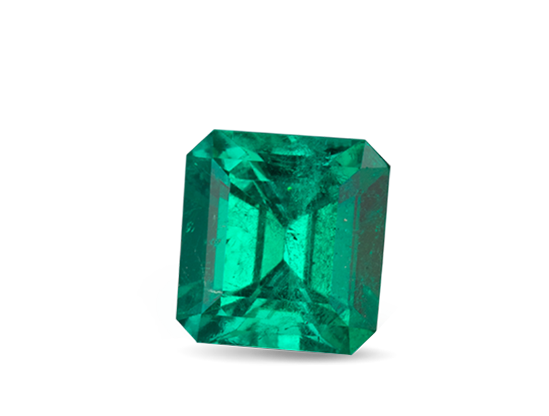
Emeralds gemstones come in a wide range of sizes. There are emeralds in museums and private collections that weigh hundreds of carats. At the other extreme are tiny emeralds which weigh fractions of a carat. Quality-for-quality, the price of emerald can rise dramatically as the size increases.
Famous Emeralds
There are many famous emerald jewelry pieces. The British Crown jewels are adorned with spectacular emeralds. Elizabeth Taylor, famously cherished beautiful emerald jewelry, including a stunning emerald pendant discussed below. Jackie Kennedy’s engagement ring from John Kennedy featured a 2.84 carat emerald. Famous emerald crystals and cut gemstones include:
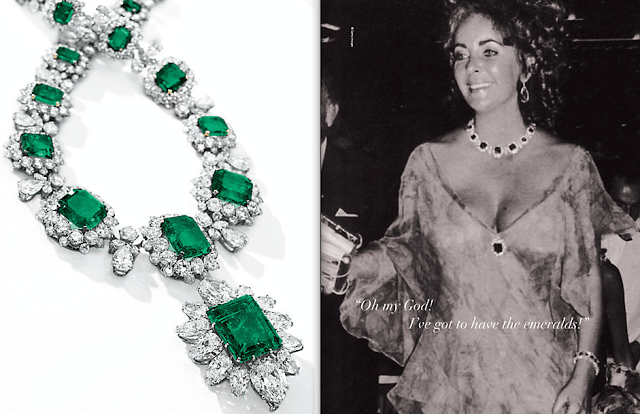
Elizabeth Taylor’s emerald pendant (above) sold in 2011 for $6,578,500, a record $280,000 per carat. The pendant could be worn on its own or at the end of a necklace. It was part of an emerald and diamond suite Ms Taylor owned which also included a brooch, necklace, earrings, bracelet and a ring. (Image via Maia Davitashvili.)
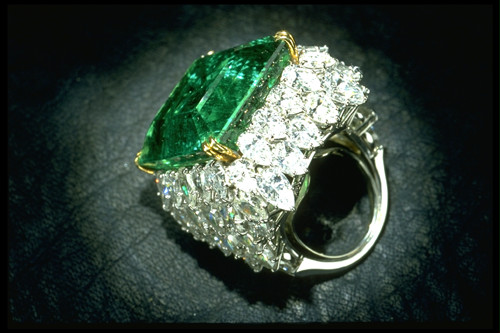
The Chalk Emerald, originally 38.40 carats in weight, was mined in Colombia, becoming the center piece of an emerald and diamond necklace made for Indian royalty. The gemstone is prized for its combination of color and clarity. In the 20th century, the emerald was re-cut to 37.83 carats and set in a ring designed by Harry Winston (above). The ring was donated to the Smithsonian Institute in 1972. Photo by Chip Clark.
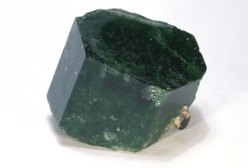
The Duke of Devonshire emerald crystal (above) is the one of the world’s most famous uncut emeralds, weighing 1383.93 carats. Originally mined in Colombia, it currently resides in London’s Natural History Museum. Photo Credit: Natural History Museum
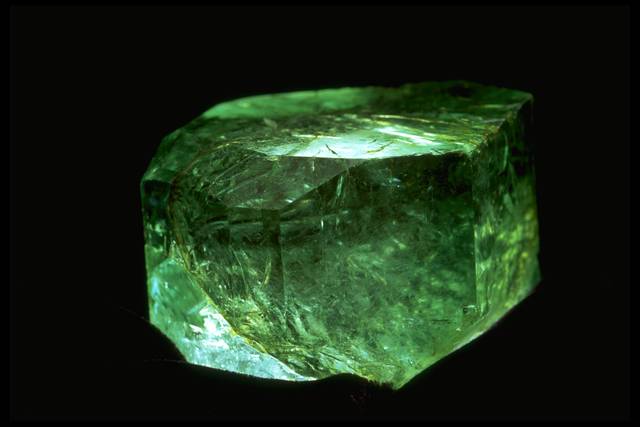
The Gachala Emerald Crystal (above) was found in 1967 in Colombia. It is renowned for its combination of size and superb green with a hint of blue color. The Gachala weighs 858 carats and was donated to the Smithsonian by Harry Winston in 1969. Photo by Chip Clark
If you'd like to learn more about the tourmaline ring shown near the top of the blog, please click on this link to our website.
Credit American Gem Trade Association, The Gemological Institute of America and Gemworld International.
